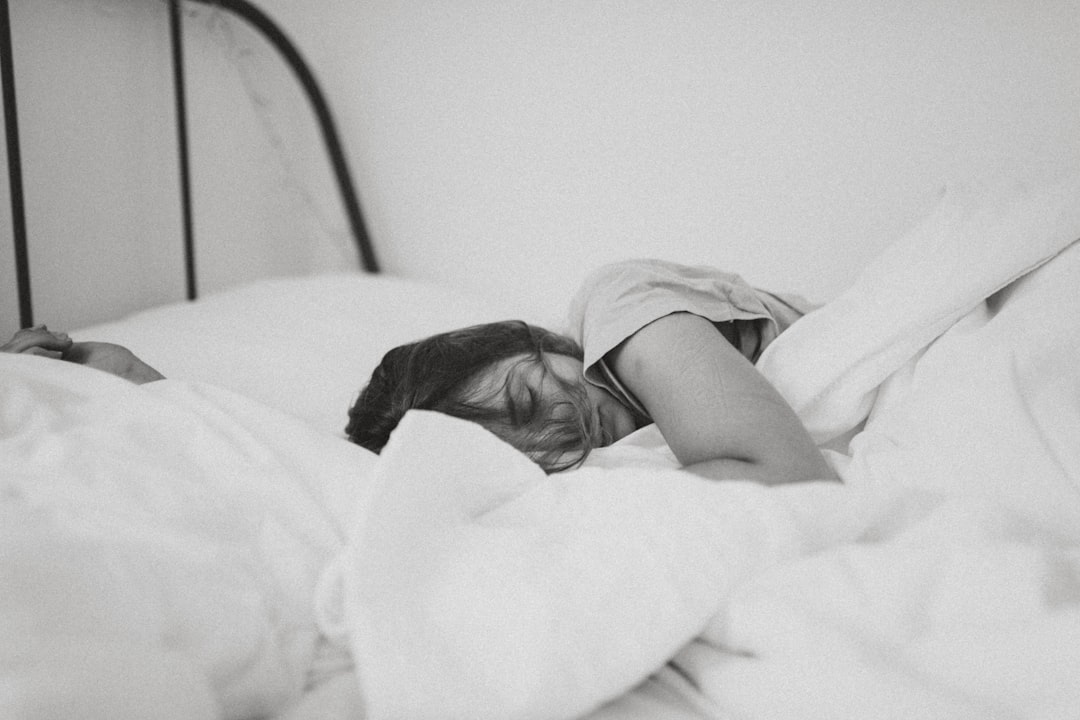Having a hard time getting to sleep? Or sleeping through the night? If you’re waking up groggy, experiencing daytime sleepiness, or struggling to snooze, nicotine might be to blame.
Nicotine can affect you day and night by disturbing your sleep cycles and exacerbating insomnia. A 2017 study found that young adults who had a nicotine dependency were significantly more likely to experience poor sleep quality. The number of cigarettes smoked correlated to their quality of sleep – the more a participant smoked, the more likely it was that they experienced insomnia, restless sleep, and daytime sleepiness [1].
Using nicotine close to bedtime can make some people too wired to fall asleep, while others report that the drug relaxes them at night. but in both cases, nicotine guarantees a night of terrible quality sleep, waking up feeling groggy, and experiencing daytime fatigue and tiredness.
Here's why:
Nicotine is a stimulant that directly interacts with the neurotransmitters that control the brain's signals for sleep. As an addictive substance, withdrawal symptoms from nicotine increase restlessness throughout the nervous system – if you are a heavy nicotine user, your body may literally wake you up to get a fix of the drug.

Nicotine Disrupts Natural Circadian Rhythms
A study in 2013 found that nicotine use (specifically from smoking tobacco) could alter the expression of genes that control the natural sleep/wake cycle in both the brain and the lungs [5]. Normally, the body releases melatonin and other neurotransmitters around sunset that relax the body and lungs, in preparation for sleep. As the sun rises in the morning, the brain and lungs slowly respond to stress hormones that gently wake you up. In nicotine users, these neurotransmitter signals get mixed up, causing sleep issues like insomnia and early waking.
Smokers tend to take longer to fall asleep, sleep less, and generally experience poorer quality sleep with lots of tossing and turning throughout the night. A huge survey of over 87,000 participants found that people who smoke tobacco experience the least restorative sleep and rarely wake up feeling fully refreshed. [7]
Nicotine Messes with Sleep Architecture
Sleep architecture is a pattern of sleep cycles that occurs throughout the night. Nicotine affects sleep quality by influencing the neurotransmitters that control this architecture. While asleep, nicotine users spend more time in light sleep states, especially in the early parts of the night when they should be in restorative, slow-wave sleep.
Stage 1: Introduction to Sleep
In first stage of sleep, your muscles relax, your eyes grow heavy, and the world fades around you. In this stage, the brain slows down but you could easily wake up without feeling groggy or disoriented. Nicotine users (especially cigarette smokers) spend more time in this sleep phase than others [5].
Stage 2: Beginning of Sleep
This stage is characterized by a light, dreamless sleep. There is a further slowing down of brain activity and muscle relaxation as your body prepares for restoration and dreaming.
Stage 3 & 4: Slow Wave Sleep
Slow-wave (also known as “deep”) sleep occurs when the brain calms down and starts to produce brain waves that are further apart and of lower amplitude. During this time, the brain's neurons literally get some rest. This part of sleep is essential for memory consolidation, release of growth hormones, healing and rebuilding tissues throughout body, and refuelling the brain with energy.
Nicotine users, particularly smokers, experience much less time in slow-wave sleep [6]. One study suggests that with each cigarette you smoke, you lose at least 1 minute of time in this sleep phase each night [3]. Without adequate time in this restorative area of the sleep cycle, the body is unable to heal and prepare for the next day. This can show up as poor memory, slow recovery from injury or illness, and waking up feeling groggy or unrested.
Stage 5: Rapid Eye Movement (REM)
With the exception of the heart and lungs, the muscles of the body become paralysed during this phase while dreaming and long-term memory creation occurs. Nicotine users spend much less time in REM (rapid eye movement) states, but smokers in particular are at a high risk of experiencing breathing obstruction when REM-muscle paralysis occurs [6].
The average person cycles through these phases four or five times per night, with most of their sleep spent in slow wave and REM phases. Due to its stimulatory and addictive nature, nicotine users tend to have fragmented sleep that keeps them cycling through lighter sleep stages and rarely entering restorative deep sleep. This can translate to slower healing, impaired growth, poor memory, sluggish thinking and fatigue.

Smoking & Sleep Disordered-Breathing
Smokers are at an even greater risk of experiencing sleep issues than people who take nicotine replacement products. Breathing conditions like sleep apnoea, asthma, and COPD are caused or exacerbated by smoking – and all of these conditions can lead to poor quality sleep.
The brain requires a steady supply of oxygen to maintain healthy sleep cycles – but not too much! Anything that disrupts the natural respiratory rate (such as a stimulant like nicotine) can cause too much brain activity and lead to light, unrestful sleep.
But too little oxygen to the brain and body is also highly dangerous. Smoking increases your risk of breathing conditions that disrupt sleep, including snoring and sleep apnoea. Chemicals from cigarettes and tobacco smoke cause the throat and nasal tissues to swell, causing partial or complete blockages in the airway to occur during sleep. Smokers are almost 3 times more likely to have sleep disordered-breathing conditions than non-smokers [4] – not only do these conditions cause low quality sleep, they also increase your risk of developing heart disease, obesity, and diabetes.

Nicotine Withdrawal
As an addictive substance, quitting nicotine cold-turkey can have temporary negative effects on many areas of your health – we're talking symptoms of fear, irritability, restlessness and not surprisingly: sleep disturbance. If you already experience insomnia, coming down off nicotine can make it worse. You may have a harder time getting into a deep sleep state (especially if you usually rely on the drug to relax you before you go to bed), or you may wake up earlier than you would like to [2]. Others may find that they sleep for longer during nicotine withdrawal but still wake up feeling unrested. As your body adjusts to life without nicotine, the symptoms will ease and your sleep will return to a truly natural rhythm.
Having a sleep disorder increases the risk of substance dependency, and people who have worse sleep during nicotine withdrawals are more likely to relapse. The sooner you get a nicotine addiction under control, the better – your sleep will improve and you may be less likely to relapse.
CAUTION: It is extremely important to NEVER smoke in bed. If you fall asleep, a lit cigarette can cause a fire in your bed and burn your house down! For your own safety and the safety of those around you, NEVER smoke while lying down in bed.
References:
[1] Dugas, E. N., et al. (2017) Nicotine dependence and sleep quality in young adults. Addict Behav., 65. https://www.ncbi.nlm.nih.gov/pubmed/27816041
[2] Jaehne, A., et al. (2015) Sleep changes in smokers before, during and 3 months after nicotine withdrawal. Addict Biol., 20:4, 747 – 755. https://www.ncbi.nlm.nih.gov/pubmed/24797355
[3] McNamara, J. P. H., et al. (2013) Sleep disturbances associated with cigarette smoking. Psychology, Health & Medicine. http://dx.doi.org/10.1080/13548506.2013.832782
[4] Kashyap, R., et al. (2001) Higher prevalence of smoking in patients diagnosed as having obstructive sleep apnea. Sleep Breath., 5:4, 167 – 172. https://www.ncbi.nlm.nih.gov/pubmed/11868156
[5] Hwang, J., et al. (2013) Circadian clock function is disrupted by environmental tobacco/cigarette smoke, leading to lung inflammation and injury via a SIRT1-BMAL1 pathway. FASEB, 28:1. https://www.fasebj.org/doi/full/10.1096/fj.13-232629
[6] Zhang, L., et al. (2006) Cigarette smoking and nocturnal sleep architecture. Am J Epidemiol, 164:6, 529 – 537. https://www.ncbi.nlm.nih.gov/pubmed/16829553
[7] Sabanayagam, C. & Shankar, A. (2011) The association between active smoking, smokeless tobacco, second-hand smoke exposure and insufficient sleep. Sleep Med., 12:1, 7 - 11. https://www.ncbi.nlm.nih.gov/pubmed/21144798/